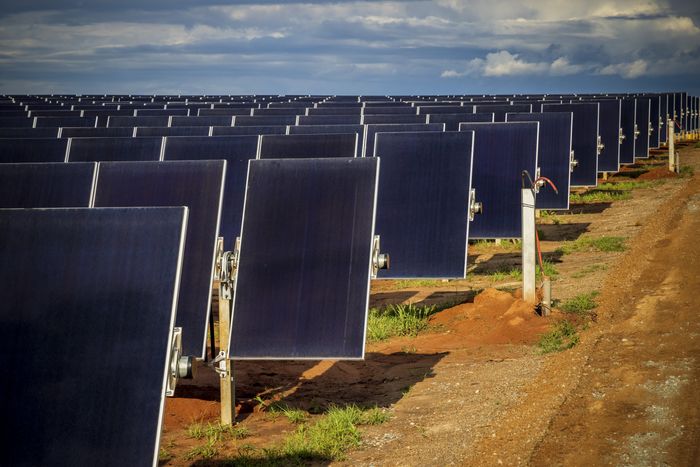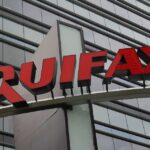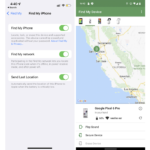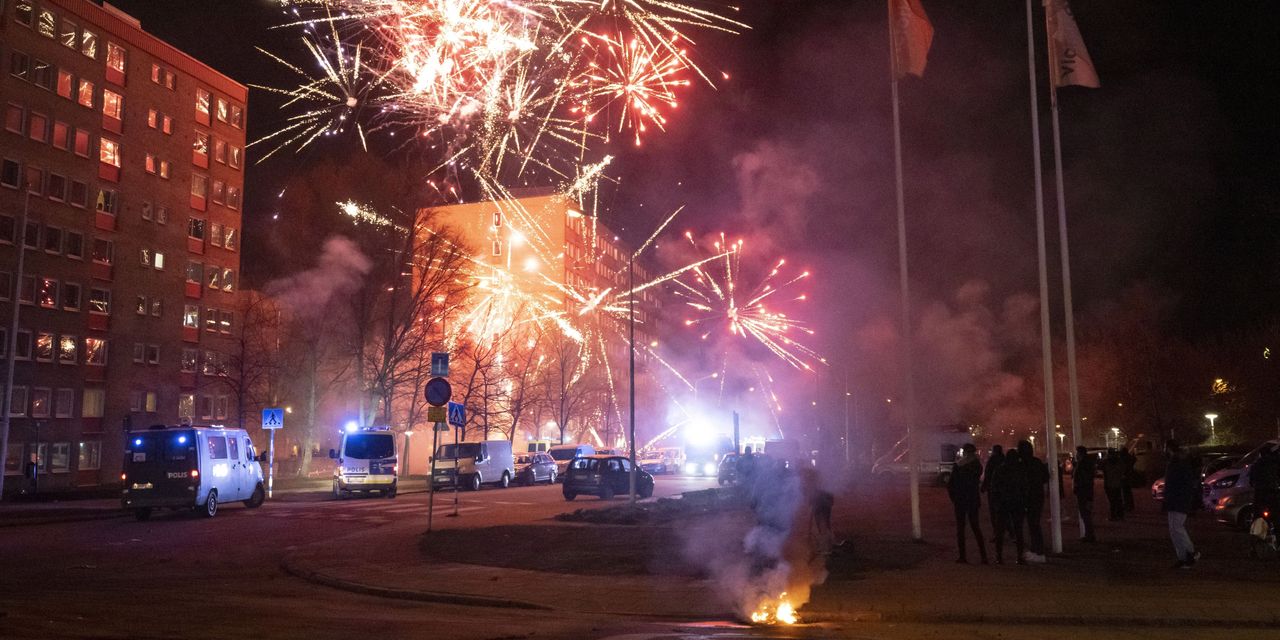Energy companies have to spend more to build solar and wind farms for the first time in years because of cost inflation and supply-chain problems, adding a financial speed bump to the switch from fossil fuels.
Clean-energy projects are exposed to inflation in old-school commodity markets by their dependence on materials such as silicon and copper. The wholesale price of solar panels has risen 19% in Europe this year, according to Martin Schachinger, managing director of pvXchange Trading GmbH, taking them to levels from late 2018. Prices remain about a third below where they stood five years ago.
Higher equipment costs partially undo a yearslong downswing in prices that expedited the shift toward renewable sources of energy. They mean the trillions of dollars investors, banks and other companies have lined up to reduce the rise in global temperatures won’t go as far.
“Over the past 10 years there have been three certainties in life: death, taxes and lower prices for solar panels,” said Nick Parsons, head of research at Switzerland-based investment firm ThomasLloyd Group. “It’s not so evident that is the case today.”
Some investors who plow money into clean energy say higher costs have made projects less financially rewarding. They don’t have much wiggle room because the gusher of capital flowing into green energy has already pushed down returns on wind and solar assets. To some extent, developers are able to hedge against rising costs by locking in contractors ahead of time and passing costs on in the form of higher power prices.
“There’s such a huge level of interest to deploy capital into green infrastructure, it is pushing prices up and returns down,” said Jonathan Maxwell, chief executive of Sustainable Development Capital LLP, a London-based investment firm. At the same time, the costs of raw materials have escalated, he said.
Prices for solar panels have risen to 28 euro cents a kilowatt from a low of 18 euro cents a year and a half ago, said Eyal Podhorzer, chief executive of Israel-based Econergy Renewable Energy Ltd. Mr. Podhorzer expects transportation difficulties and a supply shortage to keep prices elevated for up to 18 months, though he has been quoted slightly lower prices for the second and third quarters of 2022.
Panels aren’t the only thing getting more expensive. In Italy, the price of buying permits to construct solar projects has risen to between €200,000 and €300,000 from €100,000 a year ago, Mr. Podhorzer said. For Europe generally, the price of ready-to-build solar projects has doubled in the past year because there aren’t enough projects to satisfy investor demand.
Econergy has passed on some solar projects in the U.K. thanks to higher equipment costs, though it still has a busy pipeline of projects there.
Renewable developers have responded by demanding higher prices for electricity they generate in government-led power auctions in Spain, India and elsewhere, reversing a long decline in clean-energy prices. An auction got under way this month in the U.K., the world’s largest offshore-wind market as of 2020.

Prices for the building block for solar panels have more than quadrupled since the start of 2020.
Photo: Audra Melton for The Wall Street Journal
Prices for polysilicon, the building block for solar panels, have more than quadrupled since the start of 2020, according to the International Energy Agency. It estimates that an additional 95 gigawatts of solar-power capacity could be built by 2026 if material costs weren’t rising, enough to power about 71 million homes in the U.S.
Wind has also been affected, with makers of wind turbines struggling to deliver on budget due to supply-chain woes.
Developers who haven’t already locked in prices for selling renewable power have a hedge. Power prices have leapt in Europe this year amid an intensifying energy crisis, offsetting rising input prices, said Michael Bonte-Friedheim, chief executive of NextEnergy Capital, whose operations include a solar farm in Cornwall, U.K.
SHARE YOUR THOUGHTS
What do you think should be done to promote renewable energy? Join the conversation below.
But renewable investors were already chasing returns, and for some cost inflation is adding to the squeeze. For a solar project that earlier would have returned 8% to 9%, rising costs might pull that down by 1 to 1.5 percentage points, said one European fund manager who invests in renewables.
“Valuations are extremely toppy,” said Fabian Chrobog, who runs London-based North Wall Capital. North Wall, which manages nearly €1 billion in assets, equivalent to just over a billion dollars, recently declined to lend to a U.K. energy-storage project because the returns didn’t make sense, he said.
Andrea Echberg, head of global infrastructure and real assets at Pantheon Ventures, said prices for onshore wind and solar farms have reached levels at which the firm would prefer to sell assets more than buy them. Ms. Echberg said the fund is seeking better returns by building and developing projects instead of buying them ready-made.
She has also been venturing outside well-trodden renewable markets, finding returns in rollouts of smart meters, for example.
Write to Julie Steinberg at [email protected] and Joe Wallace at [email protected]
Copyright ©2021 Dow Jones & Company, Inc. All Rights Reserved. 87990cbe856818d5eddac44c7b1cdeb8








